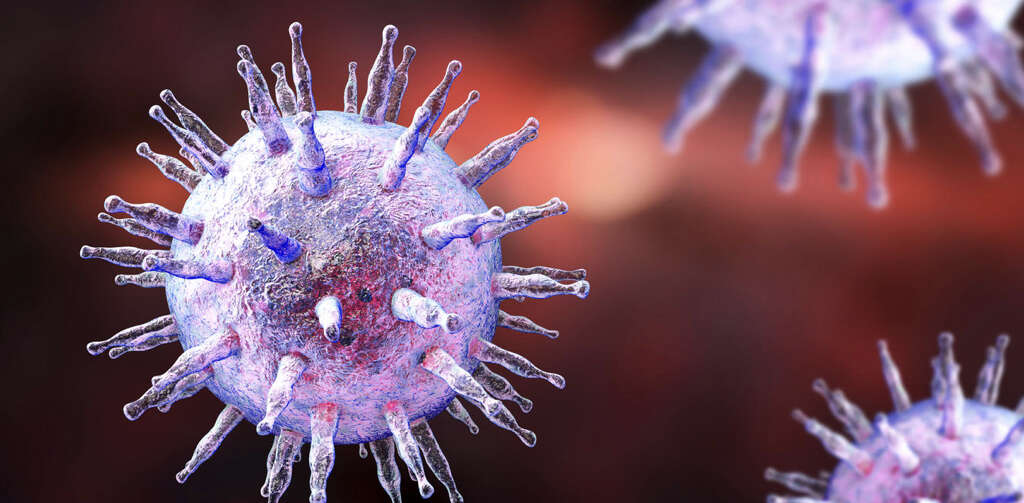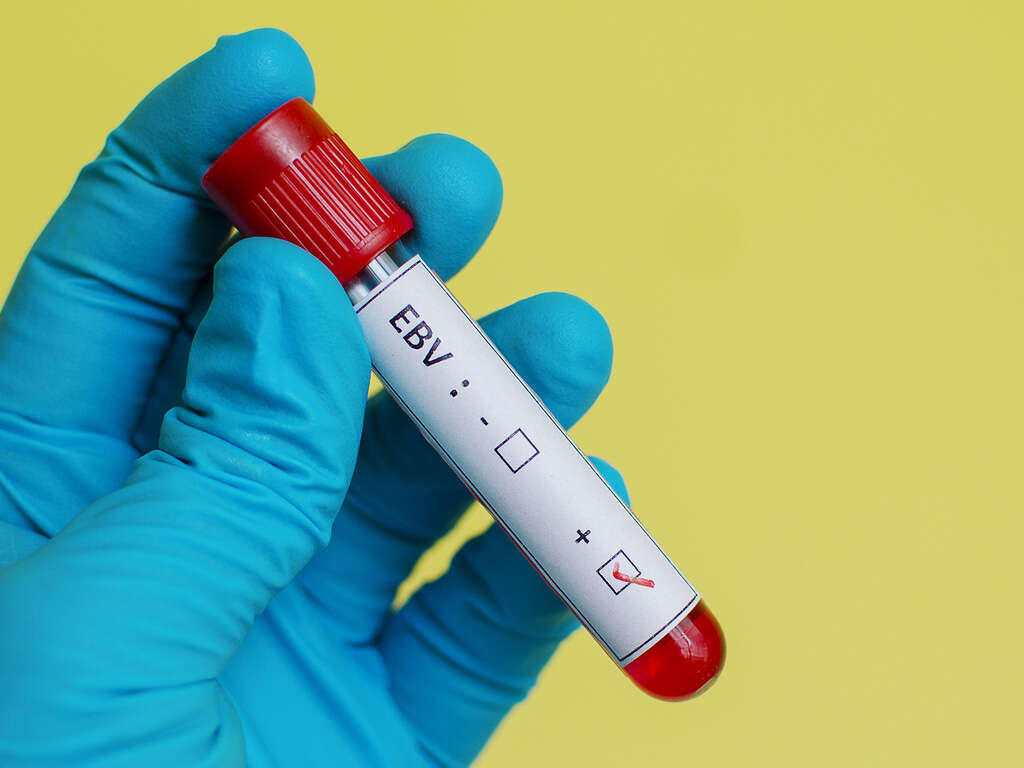What Is Kissing Disease?
Kissing disease is another name for mononucleosis, a contagious viral infection. The condition is very common, especially among young adults and teens. By the time people reach adulthood, they are less likely to get it because they have already built up the antibodies needed to prevent infection.
Mono spreads easily through the exchange of bodily fluid. The illness is often referred to as kissing disease because it is frequently passed from person to person through kissing, though there are other means of transmission.

1. Causes
Mononucleosis’s most common cause is the Epstein-Barr virus. This pathogen is highly prevalent around the world, infecting up to 90% of the population, though most never realize they have it.1Balfour Jr., Henry et al. Infectious mononucleosis. Clinical Translational Immunology vol. 4,2 (2015): e33. doi: 10.1038/cti.2015.1 It causes a number of illnesses, including viral meningitis. Exposure to this virus is high, and most people will have contracted it at some point in their lives.
Though EBV is frequently the source for infectious mono, there are other potential causes for the illness. Several viral infections can lead to mononucleosis, including the hepatitis viruses, cytomegalovirus and rubella. A parasite called toxoplasma, which spreads through food, can also cause the illness.

2. Risk Factors
Teenagers and young adults between the ages of 15 and 24 are more at risk for contracting kissing disease. They are also likely to experience symptoms that are more severe than people from other age groups. Children can also get the disease, but it is unclear as to how this occurs.
Those who live in developed countries are more vulnerable to contracting mono by the time they reach their teen years due to the lack of exposure to EBV early in life. Without this exposure, there is no opportunity for building up the antibodies to fight off the virus.

3. Transmission
EBV is transmitted through bodily fluids, as are the other viruses that can cause the disease. Saliva is the most frequent mode of transmission, but the pathogens can also spread via the blood and semen. When the virus is present in the saliva, it can be spread through deep kissing, drinking and eating from shared glasses and utensils, or sharing a toothbrush.
Mono is transmitted through the semen during sexual intercourse. Blood transmission occurs less frequently, though it can happen during a blood transfusion or organ transplant. After the disease passes, the virus remains in the system, but inactive. It may reactivate in the future, making people contagious again even though they are unlikely to have symptoms.

4. Diagnosis
A physician makes an initial diagnosis based on a physical assessment of your symptoms and how long you have had them. The doctor may also order a rapid antibody test to determine if you have the EBV antibodies. The results of this test come back quickly. However, if you are in the first week of the illness, it is likely not enough time has elapsed to detect antibodies.
If the rapid test comes back negative, another type of antibody test may be needed. It is a more sensitive test, but it takes longer to get the results back. It is also possible that your doctor will order a white blood cell count to see if your counts are abnormal, which would suggest an infection.

5. Signs & Symptoms
Infectious mono is a slow-moving illness. It can take up to six weeks between contracting the virus and the appearance of the first signs. In addition, when the symptoms do begin, they can start slowly. They do not necessarily occur simultaneously.
Extreme fatigue, sore throat, fever and swollen lymph nodes under the arms and at the back of the neck are common symptoms of the illness. A persistent headache is not unusual. It is also possible to have swollen tonsils and spleen as well as a skin rash.

6. Complications
One of the biggest causes for concern with mononucleosis is complications from an enlarged spleen. While it is not common, there is a risk of the organ rupturing. This causes a sharp pain in the upper left side of the abdomen, which comes on suddenly and requires immediate medical attention.
Mono can also lead to complications in the liver, causing jaundice and hepatitis. There are a few complications that are rare but possible, such as low platelet or red blood cell counts. Heart inflammation and nervous system complications may also occur.

7. Treatment & Management
Mononucleosis is not treatable with antibiotics, as it is the result of a viral infection. If there is a secondary infection involved, such as strep throat or a sinus infection, it may be treated with antibiotics. Mono has to run its course, so self-care at home is necessary to recover from the disease.
Getting enough rest is the most important step you can take toward feeling better. It is also crucial to drink plenty of water and eat a healthy diet. Even when other symptoms subside, it can take a few months to return to normal. If you attempt to resume your normal activities too soon, you risk a relapse.

8. Prevention
There is no vaccine to prevent you from getting kissing disease. If someone you know has infectious mononucleosis, you can greatly reduce your risk for getting it by not kissing the person or sharing food, drinks or toothbrushes. Likewise, if you have the illness, you can prevent the spread in the same manner.
It is important to note that the virus can remain present in the saliva even after the fever has lifted. It can take several months before it clears from bodily fluids. The risk of spreading the virus may not be as high as when the fever is still present, but it does exist.

9. Prognosis
The symptoms of mono can linger for several months, making complete recovery a slow process. Relapses are possible for those who attempt to regain normal activity levels too soon. Most people return to their prior state of health after the illnesses passes.
There are few risks of long-term effects. Those who experience complications may require additional treatment measures, including surgery for a ruptured spleen. Though it is possible to contract the illness a second time, the likelihood of doing so is small.

10. When to See a Doctor
The symptoms of mono are shared with a number of other illnesses. If you experience a sore throat that does not go away after a few days, you should get checked for a secondary strep infection. Likewise, a stiff neck, headache or rash need to be assessed to rule out meningitis.
If you develop more serious symptoms, such as dizziness, difficulty breathing or swallowing, extreme weakness in the legs or arms or a persistent high fever, you should contact your doctor. Should you experience a sharp pain on the left side of your abdomen, it is important to see a healthcare provider quickly.









